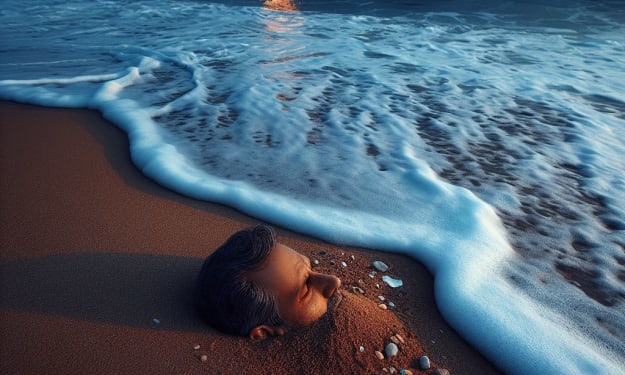How much does it cost to climb Mera Peak
Mera Peak is the highest of the peaks in Nepal that are defined as 'trekking peaks'. At 6476m it is a high mountain that requires little technical climbing

Mera Peak Climbing is an exhilarating and challenging adventure that takes you to the summit of Mera Peak, one of Nepal's highest trekking peaks. Located in the remote Khumbu region, Mera Peak offers breathtaking panoramic views of the Himalayan giants, including Everest, Lhotse, Makalu, and Cho Oyu.
The journey begins with a scenic flight from Kathmandu to Lukla, followed by a trek through the picturesque landscapes of the Khumbu region. As you trek through dense forests, quaint Sherpa villages, and high-altitude terrain, you will gradually acclimatize to the increasing altitude. The route takes you through the Hinku Valley, allowing you to immerse yourself in the stunning natural beauty of the region.
Mera Peak Climbing requires physical fitness, technical skills, and the use of mountaineering equipment. Prior climbing experience is recommended, but not essential, as professional guides will provide necessary training and support throughout the climb. The climb involves traversing glaciers, using fixed ropes, and ascending steep slopes, offering an exciting and rewarding mountaineering experience.
The summit day is the most challenging part of the climb. With proper acclimatization and guidance from experienced climbing guides, you will push your limits to reach the summit of Mera Peak. Standing at an elevation of 6,476 meters (21,247 feet), the summit offers an awe-inspiring view of the surrounding Himalayan peaks, making all the effort worthwhile.
Enjoy Nepal Treks and Expedition Pvt. Ltd. can provide professional climbing guides who are experienced in Mera Peak Climbing. Their knowledgeable guides will ensure your safety, provide technical guidance, and make the necessary arrangements for a successful climb. They will also take care of logistics such as accommodations, meals, and permits, allowing you to focus on the adventure ahead.
The best time to visit Mera Peak Climbing is during the spring (March to May) and autumn (September to November) seasons when the weather is relatively stable, and the views are clear. These seasons offer optimal climbing conditions, making it a popular choice for climbers from around the world.
Embarking on the Mera Peak Climbing journey is an unforgettable experience that combines trekking, mountaineering, and breathtaking Himalayan vistas. It is a testament to your determination, courage, and love for adventure. With the support of a reliable trekking agency like Enjoy Nepal Treks and Expedition Pvt. Ltd., you can make your Mera Peak dream a reality.
How difficult is Mera Peak climb?
Climbing Mera Peak is considered a challenging endeavor and requires a certain level of physical fitness, mountaineering skills, and acclimatization. While it is classified as a trekking peak and doesn't require extensive technical climbing experience, it does involve some technical sections and demands careful preparation and planning. Here are some factors that contribute to the difficulty level of Mera Peak climb:
Altitude: Mera Peak stands at an elevation of 6,476 meters (21,247 feet), which means that climbers will be exposed to high altitude conditions. Altitude sickness and its associated symptoms can pose challenges and require proper acclimatization.
Climbing Skills: Although Mera Peak does not require advanced technical climbing skills, some sections of the climb involve walking on glaciers, crossing crevasses, and using fixed ropes. Familiarity with basic mountaineering techniques such as using crampons, ice axes, and ropes is beneficial.
Weather Conditions: The weather in the Himalayas can be unpredictable and harsh, especially at higher elevations. Climbers may encounter extreme cold, strong winds, and snowfall, which can add to the difficulty and require appropriate gear and clothing.
Physical Fitness: Mera Peak climb involves long days of trekking and demanding ascents. Good physical fitness, including cardiovascular endurance, strength, and stamina, is essential to withstand the rigors of the climb.
Duration and Length of the Climb: Mera Peak climb typically takes around 18 to 20 days, including acclimatization and trekking days. It is a multi-day expedition that requires perseverance and mental resilience to overcome challenges along the way.
While Mera Peak climb is challenging, it is achievable for climbers with the right preparation, training, and guidance from experienced climbing guides. Prior trekking experience and some mountaineering skills are beneficial, but not mandatory, as professional guides can provide necessary training and support during the climb.
The cost of climbing Mera Peak can vary depending on various factors such as the trekking agency you choose, the services included in the package, the duration of the climb, and the number of climbers in the group. It is important to note that climbing Mera Peak is not a budget-friendly activity, as it involves logistical arrangements, permits, equipment, guides, and other expenses. Here are some cost considerations for climbing Mera Peak:
Permit Fees: Climbing Mera Peak requires obtaining various permits, including the Mera Peak Climbing Permit, the Khumbu Pasang Lhamu Rural Municipality Fee, and the Sagarmatha National Park Entry Permit. The cost of these permits can vary depending on the season and nationality of the climbers.
Trekking Agency Fees: Joining an organized expedition with a trekking agency is highly recommended for safety and support. The agency will provide experienced climbing guides, arrange logistics, accommodations, meals, and transportation. The cost of agency services can vary based on the level of support and the inclusions provided.
Guide and Porter Costs: Hiring a climbing guide is crucial for a safe and successful Mera Peak climb. The guide will provide guidance, support, and technical assistance throughout the journey. Porter services may also be required to carry equipment and supplies. The cost of hiring guides and porters will depend on the duration of the climb and the number of individuals in the group.
Accommodation and Meals: During the trek, you will require accommodations and meals in teahouses or lodges along the trail. The cost of these can vary depending on the location and level of comfort.
Equipment and Gear: Climbing Mera Peak requires specialized mountaineering equipment such as crampons, ice axes, harnesses, ropes, and helmets. The cost of renting or purchasing this equipment should be taken into account.
Transportation: The cost of transportation from Kathmandu to Lukla, the starting point of the trek, and back should be considered. This typically involves a domestic flight, and the prices can vary depending on the airline and the season.






Comments
There are no comments for this story
Be the first to respond and start the conversation.